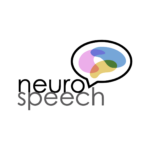About
Genetics of neural oscillations in the context of speech and language
Cortical oscillations play an important role in speech and language processing, namely the low gamma (25–35 Hz), theta (4–8 Hz) and delta (1–3 Hz) rhythms. Language disorders such as autism or dyslexia are associated by disrupted oscillatory patterns during speech perception and can be conceptualized as oscillopathies.
The purpose of this project is to understand the genetic influences driving cortical oscillations involved in speech processing, in order to better characterize the neurobiological underpinnings of speech – in both healthy individuals and individuals with speech disorders.
By analyzing oscillatory activity (notably theta-gamma phase-amplitude coupling) alongside genetic data, we aspire to uncover novel insights into the etiology of speech difficulties, paving the way for more targeted and effective therapeutic interventions.




